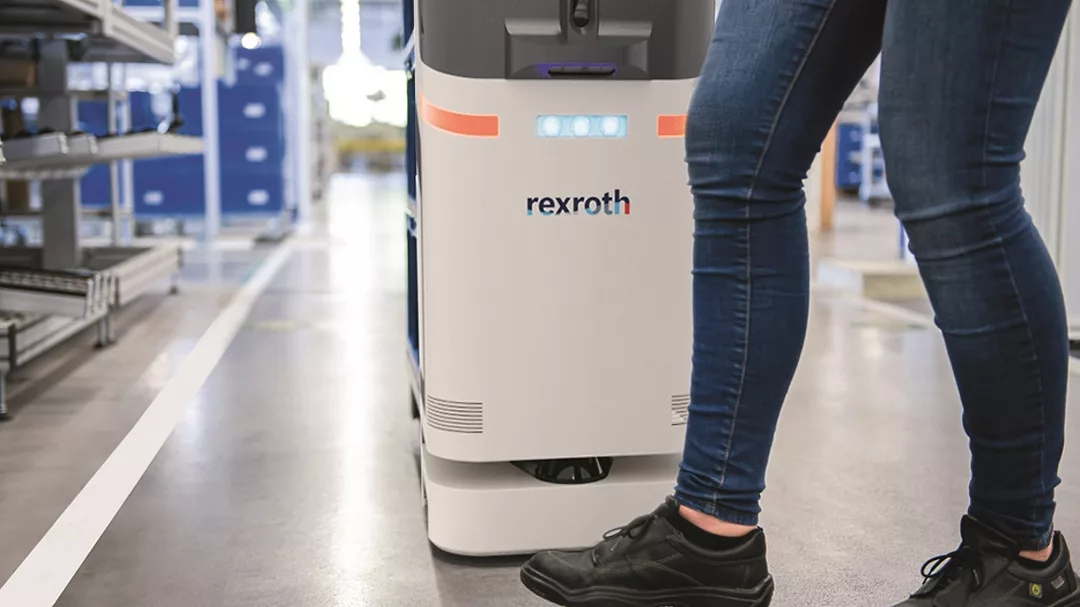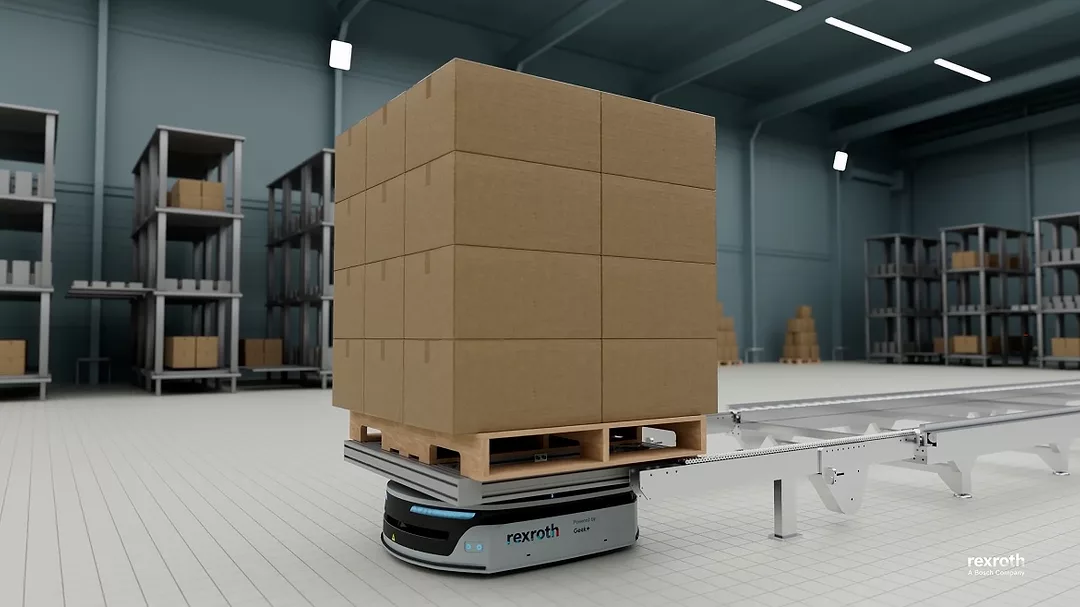Automated Mobile Robots
How AMRs Move CPG Manufacturers into the Next Phase of Factory Automation

Image courtesy of Bosch Rexroth

Image courtesy of Bosch Rexroth
Autonomous mobile robots (AMRs) are here to help revitalize the consumer-packaged goods (CPG) industry and help humans move their operations into the next phase of factory automation. As the industry enters this critical next stage of production efficiency, it’s urgent to remember that humans remain the key to making mobile robots successful in manufacturing facilities, warehouses and distribution centers.
The adoption of mobile robotics is just starting—with the manufacturing industry at a 10% adoption rate. Especially in tightly margined industries like CPG, industry leaders are looking into mobile robotics technology to evaluate how it can benefit their current workforce, improve their production processes and help them expand their operations. Preparing production workflows for the introduction of robots is critical for advancing automated operations and helping ensure successful workflows. As mobile robotics shows its benefits and more manufacturing leaders start moving towards implementing fleets, the adoption rate for mobile robotics in CPG manufacturing workflows will likely start to increase.
How Autonomous Mobile Robots Benefit CPG Production
Safety is, and always will be, a major concern within manufacturers across industries, including CPG. Improving worker safety is the one of largest benefits AMRs provide for its user. For example, there were at least 80 fatalities associated with forklift usage in 2020. In just one year, it’s estimated there are approximately 7,000 accidents reported in a facility. Safety initiatives are paramount to not only keeping the workforce protected but to keeping production steady and competitive with the market. AMRs can eliminate historically dangerous equipment such as forklifts that simply need to carry large payloads, such as pallets of the finished product, from one end of a facility to another, allowing the driver to work on higher-value tasks while keeping processes flowing smoothly.
AMRs also play a large role in reducing strenuous activities and repetitive tasks from human workers during material handling workflows. This is critical for helping CPG leaders to redirect their labor pool to spend their time on value-add tasks that robotics can’t complete. Especially in industries with tighter labor markets, if a worker needs to maximize their time during a shift, mobile robots can take on those repetitive mundane tasks. Even if it’s just a 5-minute session to walk across the warehouse, that time can add up quickly throughout a single shift. This is where AMRS can help eliminate wasted worker time, and when multiplied over shifts, CPG companies can experience some good productivity gains.
CPG Companies Gain Competitive Advantage with Autonomous Mobile Robots
CPG companies are always looking for more innovative ways to get more out of their production process to meet aggressive throughputs and keep up with industry demands. This challenge isn’t exclusive to Fortune 500 companies—even smaller family-owned operations are exploring new technology to help them fulfill contracts competitively. And, especially with a competitive labor market, they’re looking to advanced technology to help augment some of the worker tasks on a day-to-day basis.
Integrating AMRs into workflows is an excellent fit because they are designed to help improve material movement efficiency and worker safety in intralogistics applications, without additional infrastructure. A mobile robot with a compact design will be the ideal fit for CPG applications, allowing it to navigate the tight spaces that often challenge CPG warehouses.
Integrate Autonomous Mobile Robots into Cohesive CPG Factory Automation Workflows
Imagine this scenario—you’re a CPG company that wants to automate multiple stages of your production process. You’ve set up a workflow so that the product travels down a pallet-based conveyor line built on an aluminum framing base, powered by automated drives and controls and outfitted with Cartesian robots for handling the product as it moves through the various stages of the production line. Once the product has completed one automated workflow, it will need to be transferred to the next. Rather than a worker running a product back and forth throughout the day, an AMR can be integrated into the workflow to keep processes running smoothly.
Ultimately, it’s important to remember that an AMR is most effective for CPG companies when it integrates into a comprehensive factory automation system. Autonomous mobile robots, such as the MP1000R, complement other key factory automation solutions including conveyors, aluminum framing, linear motion systems, and more. It’s not just an AMR. It’s one component of a complete automation ecosystem that is engineered for maximum productivity.Looking for a reprint of this article?
From high-res PDFs to custom plaques, order your copy today!






